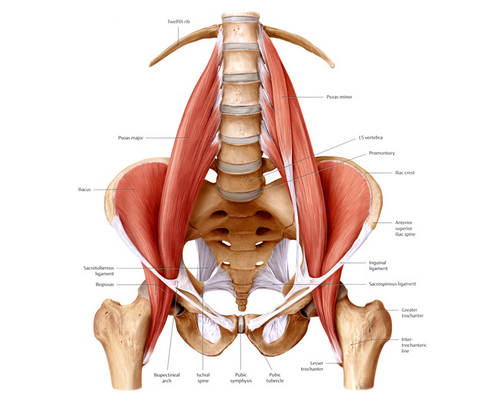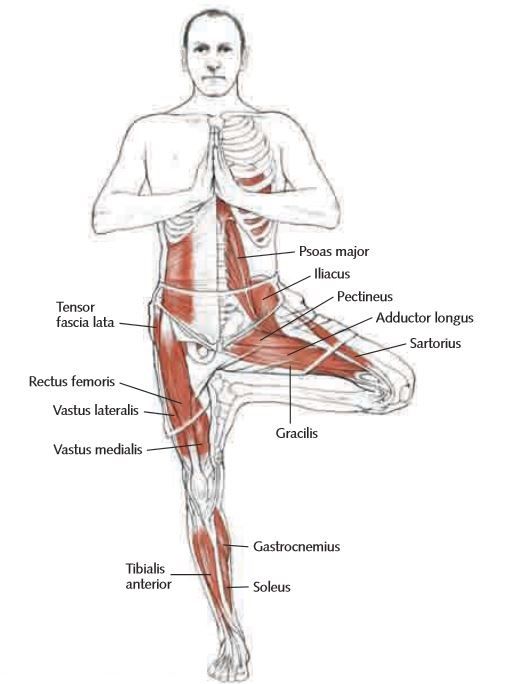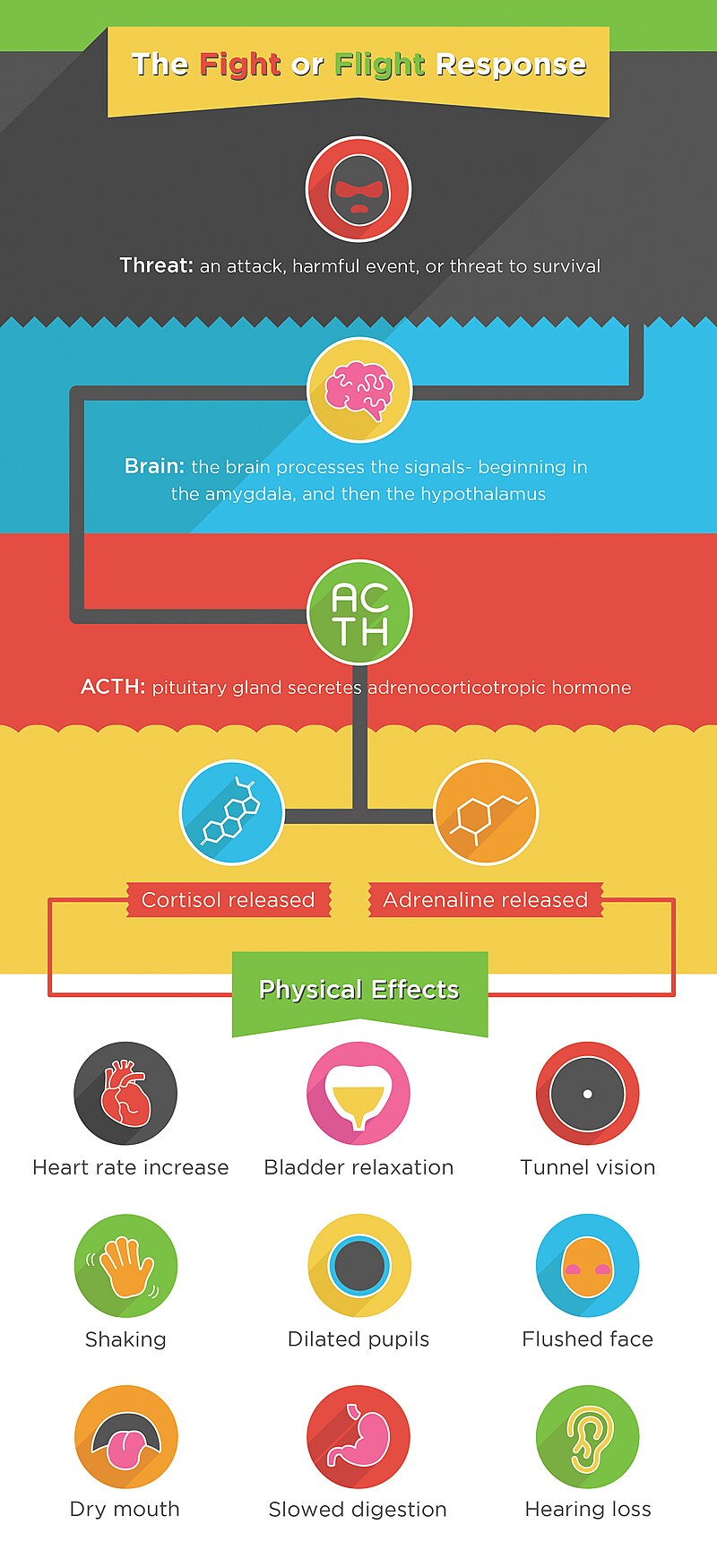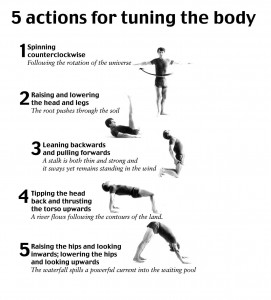I've been taking yoga classes over the last 6 months, and wanted to share some observations.
When EE first came out, I was interested to note the discussion about shoulder and neck tension and how that relates to blocked emotions and stored stress. That stress can build up and be stored in the body is also rather important to consider.
So if your neck and shoulders are tense you have a good indication your stress levels are high. If this has been chronic over a lifetime, you will also tend to dissociate from the body and tension will be 'normal'. In short, you won't register the tension without body work (i.e. massage) and body awareness (i.e. yoga).
Awareness of how stressed you are is extremely important from a Work point of view. When you are stressed (even if you are unaware of it) your brain is biased towards running on automatic {Do you find yourself repeating old behaviors and dissociating?}. Your ability to learn and adapt is compromised.
Depending on personality you may also be hypersensitive to other peoples stresses/emotions, hypersensitive to sound/light/sensation, become withdrawn/doubtful and unable to handle new or stressful situations (thus avoiding them).
It can go the other way too, you may talk uncontrollably, become bull headed (false confidence) and walk all over other people (become less sensitive to others).
Thinking becomes obsessive/rigid and black and white. Breathing becomes shallow. Will power is depleted.
There is another equally important muscle group when it comes to this stress response, the hips and psoas muscles.
It's connected to the vagal system, and tenses when stressed. It constricts to curl you into a ball (protect yourself from danger).
Prolonged tension here can lead to lower back pain, poor posture, poor core strength, shallow breathing and leg pain/cramping.
*edit* Please ignore the 'esoteric' fluff - we are interested in the anatomy and physiological results that come from stretching this muscle.
The 'Muscle of the Soul' may be triggering your fear and anxiety
So using yoga exercises such as hip openers can send signals back to the most primal parts of our brain to turn off the stress response. I've found it extremely effective when combined with pipe breathing - it amplifies the effects of pipe breathing.
Another interesting thing I learned is the connection between fight/flight and muscle groups.
Fight engage the arm/shoulder muscles, and flight engages the leg muscles.
It goes beyond just the muscles, so it should be worth considering other 'signs' of chronic stress.
Do you have any of the following signs/symptoms regularly?
https://en.wikipedia.org/wiki/Fight-or-flight_response
An interesting catch-22 can occur. If you have learned early on that stress cannot be expressed (it was socially dangerous to do so, or you scared yourself/other when doing so) then any/all of the above will make you More stressed.
Stress = danger = more/constant stress.
You may find yourself stressed if you are around others if you learned that expressing it is dangerous. Or you may find yourself stressed when alone if you learned you can only get stress relief by passing it onto others (this was likely done to you as a child).
So stress build up.
Using large muscle groups can be a quick and effective way to burn off stress - that is, stress has activated your muscles for action, so need to be used to reduce the stress hormone levels.
If you feel like wanting to curl into a ball or disappear/withdraw, then the psoas and shoulder muscles is what you need to focus on. Use yoga poses that open the hips and shoulders.
If you want to run away, then the leg muscles are what you need to focus on. Squats, jumps and actually running (sprinting) will burn the hormones off in no time.
If you feel angry or suffocated, work the arm and shoulder muscles. Push ups (either against a wall or floor), throwing a ball or a punchbag (even hitting a pillow) will burn this off (don't mentally link the punchbag to people or events, just hit it).
Do remember to warm up your muscle groups a little before this, or you may injure yourself. The aim is to burn off built up stress chemicals safely.
For further exploration of all this (other methods of stress relief that can be added together), the following is really useful: http://www.helpguide.org/articles/stress/stress-relief-in-the-moment.htm
When EE first came out, I was interested to note the discussion about shoulder and neck tension and how that relates to blocked emotions and stored stress. That stress can build up and be stored in the body is also rather important to consider.
So if your neck and shoulders are tense you have a good indication your stress levels are high. If this has been chronic over a lifetime, you will also tend to dissociate from the body and tension will be 'normal'. In short, you won't register the tension without body work (i.e. massage) and body awareness (i.e. yoga).
Awareness of how stressed you are is extremely important from a Work point of view. When you are stressed (even if you are unaware of it) your brain is biased towards running on automatic {Do you find yourself repeating old behaviors and dissociating?}. Your ability to learn and adapt is compromised.
Depending on personality you may also be hypersensitive to other peoples stresses/emotions, hypersensitive to sound/light/sensation, become withdrawn/doubtful and unable to handle new or stressful situations (thus avoiding them).
It can go the other way too, you may talk uncontrollably, become bull headed (false confidence) and walk all over other people (become less sensitive to others).
Thinking becomes obsessive/rigid and black and white. Breathing becomes shallow. Will power is depleted.
There is another equally important muscle group when it comes to this stress response, the hips and psoas muscles.
It's connected to the vagal system, and tenses when stressed. It constricts to curl you into a ball (protect yourself from danger).
Prolonged tension here can lead to lower back pain, poor posture, poor core strength, shallow breathing and leg pain/cramping.
*edit* Please ignore the 'esoteric' fluff - we are interested in the anatomy and physiological results that come from stretching this muscle.
The 'Muscle of the Soul' may be triggering your fear and anxiety
The psoas major muscle (pronounced "so-as") is often referred to as the deepest core, or as yoga therapist and film-maker Danielle Olson states, the "muscle of the soul." This core-stabilizing muscle located near the hip bone affects mobility, structural balance, joint function, flexibility, and much more. In addition to its function to help keep the body upright and moving, the psoas is believed to allow you to connect with the present moment especially when it is stretched out and tension is released from the body.
Research indicates that the psoas is vital to our psychological wellbeing in addition to structural health. Liz Koch, author of The Psoas Book, states that our psoas "literally embodies our deepest urge for survival, and more profoundly, our elemental desire to flourish." This means that there is a lot more to the psoas than one might initially think. It is entirely possible to harness healing pranic energy and improve mental health by keeping the psoas healthy. {It's probably better to consider 'prana' from a practical point of view, what made is your nervouse system in. Fight/flight/freeze or rest/digest/healing?}
Where is the Psoas?
The psoas is the principal muscle associated with physical stability. It stretches from the legs to the spine and is the only muscle connecting the legs to the spinal column. The muscle flares out from the T12 vertebrae, follows down the five lumbar vertebrae, before attaching to the top of the thigh bone.
The Reptilian Connection
In addition to connecting the legs and spine, the psoas is connected to the diaphragm. Breathing is modulated at the diaphragm, and it is also the location where many physical symptoms associated with fear and anxiety manifest. Koch believes that this is due to the direct link between the psoas and the most ancient part of our brain stem and spinal cord, called the reptilian brain.
According to Koch, "Long before the spoken word or the organizing capacity of the cortex developed, the reptilian brain, known for its survival instincts, maintained our essential core functioning." The way we live today, constantly rushing, competing and achieving, has the psoas in a constant "fight or flight" state.

Issues Associated with Chronic Psoas Stress
Trapped in a constant "flight or fight" state, psoas muscles are stressed and constricted, almost from the time of birth. As Koch notes,
"this situation is exacerbated by many things in our modern lifestyle, from car seats to constrictive clothing, from chairs to shoes that distort our posture, curtail our natural movements and further constrict our psoas."
This lifelong chronic stress put on the psoas can lead to many problems like back, hip, or knee pain, and even digestive issues and dysfunctional breathing. It could also be a major cause why people suffer from chronic physical pain.
The physical body is not the only part of you that suffers from a chronically-stressed psoas. The psoas is much more than a muscle used for structural stability. It influences every element of life, from how you feel, to how you look at the world, and even how you treat others. A variety of problems have been associated with a chronically-stressed psoas muscle: it can negatively affect your emotional state; it can impact your interpersonal relationships; and it can influence your general contentment with life. Awareness that a healthy psoas is important to emotional wellness, as well as physical health, is the first step towards ensuring that we give this muscle the attention it deserves.
Koch states, "Whether you suffer from sore back or anxiety, from knee strain or exhaustion, there's a good chance that a constricted psoas might be contributing to your woes."
Fear and the Psoas
Since the psoas is closely linked to our "fight or flight" mechanism, fear can be over-represented in those with a constricted psoas.
It is an emotion that manifests itself in the most unusual ways and can "lock" itself into the body resulting in both physical and emotional tension. By restoring balance to your psoas muscles, you are likely to release this pent up tension, which can have a profound effect on releasing unfounded fearfulness about life, and thus improve both your physical and mental wellbeing. You will feel a greater sense of inner peace, along with fewer muscle aches and strains.
The Connection to the Energetic Body
Lengthening and releasing your psoas grounds you to the Earth, which is filled with healing and revitalizing energy, thus allowing you to balance your pranic energy and enabling you to feel more present in the moment. Proper structural stability attributed to a healthy psoas allows prana to flow, unimpeded, throughout the body, allowing for proper distribution of vital energy. In the physical sense, when the body can properly support itself, movement is less-restricted and requires less effort, thus leaving you more energetic.
Ancient Wisdom for Modern Times
Our understanding of the psoas is by no means new knowledge. In fact, it is more akin to ancient wisdom that was either lost or discarded over time. Yoga shows us explicitly that ancient gurus understood the importance of releasing contracted psoas muscles. Ancient yoga asanas, or postures, that are now practiced all around the world, focus on lengthening and releasing psoas muscles and restoring comfort and balance to the entire body. With consistent practice, you can learn how to isolate this muscle, which can be immensely useful and healing in the long run.
Yoga is also a great way to measure the current health of the psoas. There are many postures, such as tree (Vrksasana), which cannot be properly achieved if the psoas is contracted. If you are practicing a sitting or standing yoga pose and feel strain in either your knees or lower back (or both), then there's a good chance that your psoas is constricted and needs more of your attention.
The psoas is an important, yet often unknown, muscle that plays a vital role in physical health and mental wellbeing. The cumulative effect of neglecting this muscle is physical and mental stress and tension, which manifests itself in our society as anxiety, depression, chronic back pain, knee pain, digestive distress, respiratory problems, etc.

So using yoga exercises such as hip openers can send signals back to the most primal parts of our brain to turn off the stress response. I've found it extremely effective when combined with pipe breathing - it amplifies the effects of pipe breathing.
Another interesting thing I learned is the connection between fight/flight and muscle groups.
Fight engage the arm/shoulder muscles, and flight engages the leg muscles.
It goes beyond just the muscles, so it should be worth considering other 'signs' of chronic stress.
Do you have any of the following signs/symptoms regularly?
https://en.wikipedia.org/wiki/Fight-or-flight_response
Reaction[edit]

The fight-or-flight response
The reaction begins in the amygdala, which triggers a neural response in the hypothalamus. The initial reaction is followed by activation of the pituitary gland and secretion of the hormone ACTH.[9] The adrenal gland is activated almost simultaneously and releases the neurotransmitter epinephrine. The release of chemical messengers results in the production of the hormone cortisol, which increases blood pressure, blood sugar, and suppresses the immune system.[10] The initial response and subsequent reactions are triggered in an effort to create a boost of energy. This boost of energy is activated by epinephrine binding to liver cells and the subsequent production of glucose.[11] Additionally, the circulation of cortisol functions to turn fatty acids into available energy, which prepares muscles throughout the body for response.[12] Catecholamine hormones, such as adrenaline (epinephrine) or noradrenaline (norepinephrine), facilitate immediate physical reactions associated with a preparation for violent muscular action. These include the following:[13]
Acceleration of heart and lung action
Paling or flushing, or alternating between both
Inhibition of stomach and upper-intestinal action to the point where digestion slows down or stops
General effect on the sphincters of the body
Constriction of blood vessels in many parts of the body
Liberation of metabolic energy sources (particularly fat and glycogen) for muscular action
Dilation of blood vessels for muscles
Inhibition of the lacrimal gland (responsible for tear production) and salivation
Dilation of pupil (mydriasis)
Relaxation of bladder
Inhibition of erection
Auditory exclusion (loss of hearing)
Tunnel vision (loss of peripheral vision)
Disinhibition of spinal reflexes
Shaking
Function of physiological changes[edit]
The physiological changes that occur during the fight or flight response are activated in order to give the body increased strength and speed in anticipation of fighting or running. Some of the specific physiological changes and their functions include:[14][15]
Increased blood flow to the muscles activated by diverting blood flow from other parts of the body.
Increased blood pressure, heart rate, blood sugars, and fats in order to supply the body with extra energy.
The blood clotting function of the body speeds up in order to prevent excessive blood loss in the event of an injury sustained during the response.
Increased muscle tension in order to provide the body with extra speed and strength.
An interesting catch-22 can occur. If you have learned early on that stress cannot be expressed (it was socially dangerous to do so, or you scared yourself/other when doing so) then any/all of the above will make you More stressed.
Stress = danger = more/constant stress.
You may find yourself stressed if you are around others if you learned that expressing it is dangerous. Or you may find yourself stressed when alone if you learned you can only get stress relief by passing it onto others (this was likely done to you as a child).
So stress build up.
Using large muscle groups can be a quick and effective way to burn off stress - that is, stress has activated your muscles for action, so need to be used to reduce the stress hormone levels.
If you feel like wanting to curl into a ball or disappear/withdraw, then the psoas and shoulder muscles is what you need to focus on. Use yoga poses that open the hips and shoulders.
If you want to run away, then the leg muscles are what you need to focus on. Squats, jumps and actually running (sprinting) will burn the hormones off in no time.
If you feel angry or suffocated, work the arm and shoulder muscles. Push ups (either against a wall or floor), throwing a ball or a punchbag (even hitting a pillow) will burn this off (don't mentally link the punchbag to people or events, just hit it).
Do remember to warm up your muscle groups a little before this, or you may injure yourself. The aim is to burn off built up stress chemicals safely.
For further exploration of all this (other methods of stress relief that can be added together), the following is really useful: http://www.helpguide.org/articles/stress/stress-relief-in-the-moment.htm



